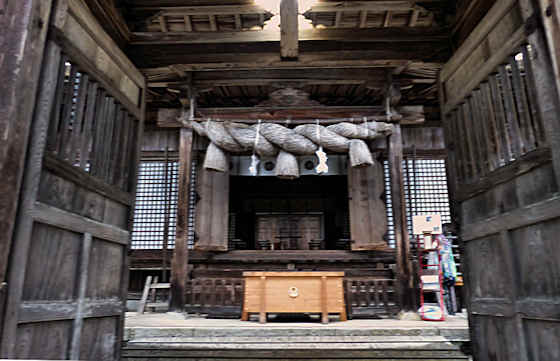Showing posts with label sacred tree. Show all posts
Showing posts with label sacred tree. Show all posts
Tuesday, February 6, 2024
Tozenji Temple 74 on the Kyushu pilgrimage
Labels:
camphor,
Fudo Myojin,
gyoki,
kyushu108,
sacred tree,
temple,
yakushi
Tuesday, October 17, 2023
Nakayama Shrine
An Ox statue usually signifies Tenjin, the deified spirit of Sugawara Michizane, and he is not one of the main kami enshrined here, but there must be a secondary Tenjin shrine.
The Shinmon gate was relocated here from Tsuyama Castle when the castle was dismantled in the early Meiji Period.
The three main kami enshrined are Kagamitsukuri no kami, Ame no nukado no kami, and Ishikori-dome no mikoto, with the first and third of these being associated wit mirrors. In the meiji period the names were changed but then changed back after 1946.
Labels:
chugoku33,
ichinomiya,
komainu,
okayama,
sacred tree,
Shrine,
tenjin,
torii,
tsuyama
Thursday, May 11, 2023
Higashikawanobori Kifune Shrine
The previous post was on Uchida Tenmangu.
Labels:
camphor,
kifune,
komainu,
kyushu108,
sacred tree,
Shrine,
takeo onsen
Wednesday, May 10, 2023
Uchida Tenmangu
I'm on day 58 of my walk along the Kyushu Pilgrimage, though I am making quite a detour in order to visit a site that will be closing down in a few weeks....
The previous post was the nearby Otsubo Quarry.
Labels:
camphor,
kyushu108,
sacred tree,
Shrine,
sugawara michizane,
tenmangu,
torii
Friday, April 21, 2023
Tokei Shrine Tanabe World Heritage Site
Tokei Shrine Tanabe World Heritage Site
Tokei Shrine is the main shrine of Tanabe, Wakayama, known as the gateway to the Kumano Kodo.
The famed warrior-monk Benkei, known primarily as the sidekick of Yoshitsune, was born in Tanabe and a statue in the shrine depicts him with his father and some chickens.
I arrived here at the end of my 4th day walking the Saigoku Pilgrimage. The previous post in the series was Takahara to Takajirioji on the Nakahechi.
Labels:
benkei,
camphor,
ema,
kumano kodo,
sacred tree,
saigoku,
Shrine,
torii
Monday, March 27, 2023
Hizen Torii & Other Shrine Details
Labels:
horse,
inari,
kyushu108,
sacred tree,
torii
Subscribe to:
Posts (Atom)































































